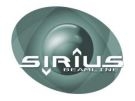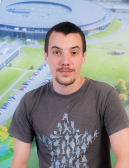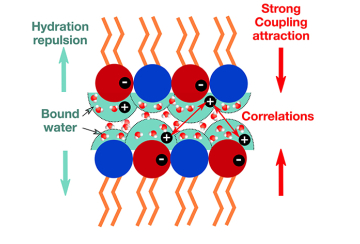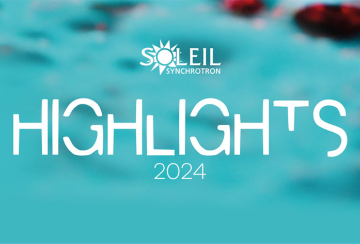
SIRIUS: Soft Interfaces and Resonant Investigation on Undulator Source
Energy range: 1.4 – 13 keV with adjustable polarization
SIRIUS takes advantage of the best energy range of the SOLEIL synchrotron ring between 1.4 and 13 keV in order to provide a tool for structural study to two large communities of condensed matter:
- Soft interfaces (air/ water interface, Langmuir monolayers, Langmuir-Blodgett, self-assembled organic films, liquid crystal interfaces, biomimetic systems …)
- Semiconductor or magnetic nanostructures (III-V materials for optoelectronics and photovoltaics, quantum wells/wires/dots, metal and oxide magnetic multilayers, functional oxides…)
This beamline is optimized for diffraction (GIXD), scattering (GISAXS) and fluorescence (XRF) in grazing incidence condition with horizontal and vertical samples at fixed energy (8, 10keV) but also for anomalous scattering (AXD) at the absorption edges of interesting elements for soft matter (Ca, Cl, Cd, S, P, K …), magnetism (L-, M- edges of 4d-5d elements, K-edges of 3d), semiconductors (K-edges of P, Si, Al, L-edges of In, Sb, M-edges of Bi), and functional oxides (L-edges of second raw transition elements). Grazing incidence spectroscopies (GI-XAFS, GI-DAFS and Reflexafs) are also available by scanning simultaneously the undulator gap and the monochromator Bragg angle.
The beamline is equipped with a large and accurate 7-circle diffractometer in order to host cumbersome dedicated sample environments; the diffractometer can work in two different configurations: 6-axis tower and kappa head. An ALD/MOCVD reactor, conceived in the frame of a collaborative ANR project with different national groups, can be mounted on the 6-axis tower for in situ characterization of oxide nanostructure growth by x-ray scattering, spectroscopy and reflectivity. A second smaller in vacuum 4-circle diffractometer will be available in March 2017 for tender x-ray diffraction and spectroscopy.
The undulator source enables to vary the polarization of the x-ray beam from linear horizontal to linear vertical or circular. It is also planned to use the large spatial coherence of the x-ray beam expected with such “tender” energy (1.4 -4keV).
Reference papers:
Soft condensed matter: P. Fontaine, G. Ciatto, N. Aubert and M. Goldmann, Science of Advanced Materials 6, 2312 (2014)
Hard condensed matter: G. Ciatto, M. H. Chu, P. Fontaine, N. Aubert, H. Renevier, J. L. Deschanvres, Thin Solid Films 617, 48-54 (2016)
Team


Employment
Click here to access to the SOLEIL employment web page
Technical data
1.4-13 keV
ΔE/E ~ 10-4 with two crystals monochromator (Si 111)
ΔE/E ~ 10-3 with a grating-multilayer monochromator.
Apple II HU34
2.1014ph/s/0.1%bw @ 8keV
- Two crystals monochromator (Si 111 and InSb 111) for linear polarization (1.7-13 keV),
- Multilayer Grating monochromator for circular and vertical polarization (1.4-4 keV),
- Three mirrors (focalisation, harmonic rejection),
- Deflection mirror.
- 6 circles diffractometer with large space to host dedicated and cumbersome sample environment.
- Langmuir through + Brewster Angle Microscope (BAM)
- Solid sample baby chamber equipped with heating tools, flange for fluorescence detector, transfer tools to change sample without breaking vacuum, two possible configurations/sample positions (Be dome for XRD and connection to beamline vacuum for spectroscopy).
- 1013 ph/s @ 8kev (600x1400µm2, 7x37µrad2) with Si 111
- 2 1013 ph/s @ 2kev (1000x1700µm2, 7x54µrad2) with Si 111
- 5 1013 ph/s @ 2kev with grating
- One dimensional (solid)
- Peltier-cooled low-noise diode for reflectivity measurements
- Fluorescence (single element silicon drift detector and 4-element silicon drift detector by Bruker, energy resolution ~ 130 eV),
- Two ion chambers by FMB Oxford
- Gas filled position sensitive detector (PSD) with energy analysis
- 2D single photon counting detector: Pilatus 3 - model 1M (by Dectris)
- 2D detector for tender x-ray studies (to be purchased asap)
Scientific Opportunities
|
Soft Condensed Matter – Soft Interfaces |
- Liquid – air interface, |
|---|---|
| Biology, Biomaterial |
Biomimetic systems |
| Semiconductor nanostructures |
- III-V epitaxial thin films, quantum wells/wires/dots, nanostructures - III-V semiconductor alloys for optoelectronics and photovoltaics - (P, Si) doping in semiconductors, Al-based barrier layers |
| Magnetism |
- Magnetic Multilayers, Periodic magnetic nanostructures - Magnetic Oxides, Dilute Magnetic Semiconductors, Defects Magnetism |
|
Functional OXIDES |
- In situ characterization of the ALD/MOCVD growth of oxide nanostructures (e.g. ZnO) on different substrates (Si, Al2O3, III-V semiconductors) - Ferroelectric and relaxor oxides, electronic and magnetic phases at the interfaces (strongly correlated electrons systems) - Crystalline Oxides on Silicon, III-Vs on Si, Organic functionalization of Si |


